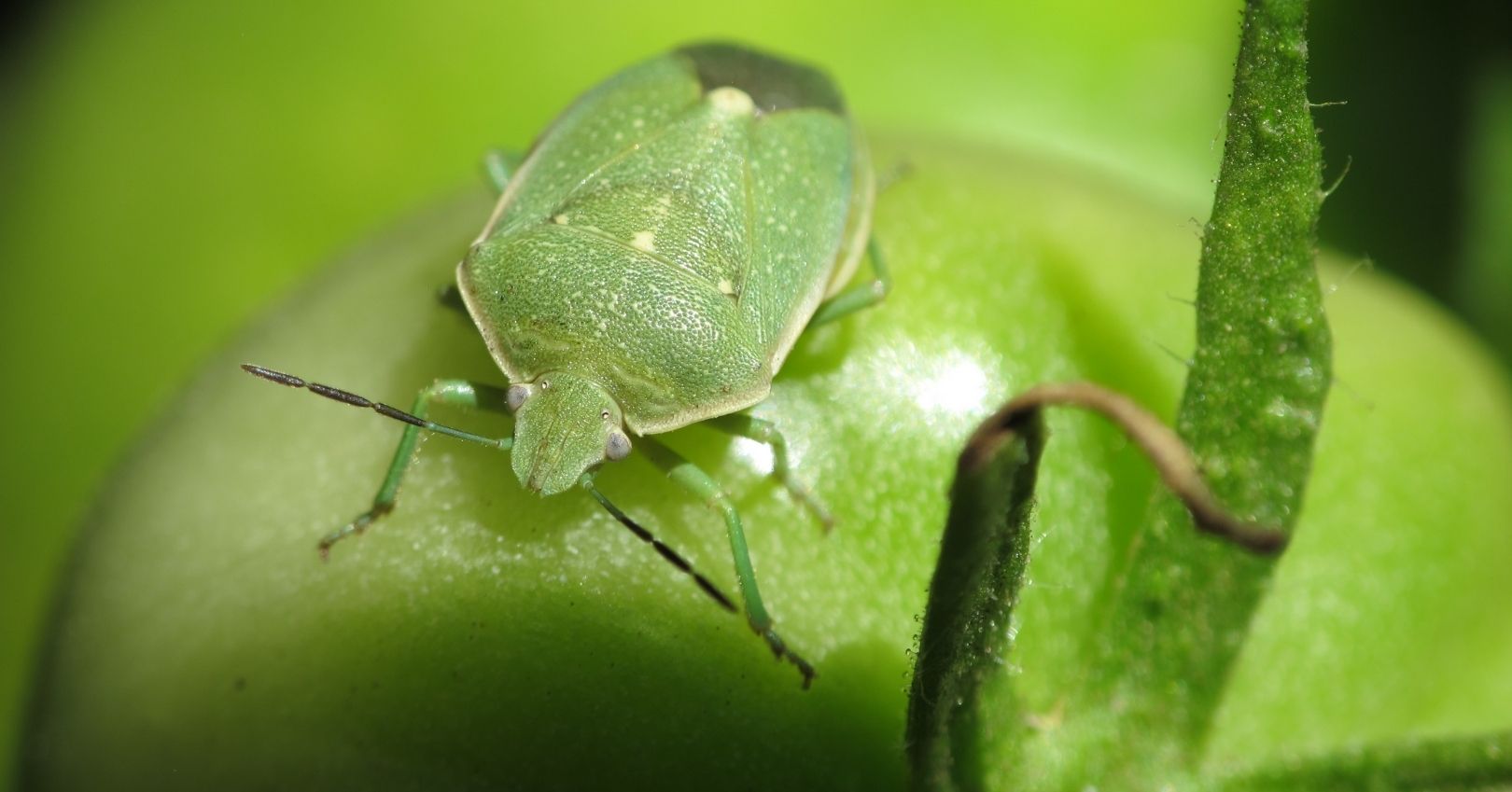Stink Bugs


Description
Adult: Shield-shaped, 1/2 to 2/3 inch (13 to 16 mm) long, brown or green in color, with an inverted triangle on the upper back.
Egg: Barrel-shaped, and white when first laid, then darken as they mature. Eggs are laid in clusters of 10- 30 on undersides of leaves.
Nymph: Resemble adults but are smaller and more rounded with brightly patterned black, red, white and green bodies
Life History
Stink bugs overwinter as adults on the ground under leaves, plant debris, and weedy areas. They become active in the spring, and can feed on a wide range of fruits and vegetables. Nymphs hatch from eggs and initially begin feeding in close proximity to each other but scatter as they mature and grow. Stink bug infestations typically occur along field edges that border weeds and other desirable host plants. When disturbed, they emit a foul odor.
Damage
Stink bugs insert their straw-like mouthparts into the fruits or seeds of vegetables, piercing the skin, and suck out the juices. The stink bug may probe in several locations causing the fruit to develop hard, whitish, callous tissue beneath the skin at the feeding site. Feeding injury becomes more apparent as fruits ripen, and appears as cloudy areas of hard yellow spots just under the fruit of the skin. Stink bug feeding can also result in misshapen or shriveled fruits and seeds. On green fruit, damage appears as dark pinpricks surrounded by a light colored area that remains green or turns yellow when the fruits ripen. Severe injury may cause the entire fruit to develop a golden color. Stink bug damage is not as common in peppers and eggplants as it is with tomatoes. Damaged fruits are safe to eat, but the flavor may not be well developed, and are usually undesirable for the fresh market.
Management
Stink bugs are difficult to control because they are strong fliers and readily migrate in and out of vegetable fields and gardens, and will have dispersed by the time plant symptoms appear. In tomatoes, management should begin when fruits are one inch in diameter.
Cultural
- Monitor for presence of stink bugs. Shake foliage over a tray or onto the ground. Count fallen nymphs and adults. Treatment thresholds will vary with plant types and intended use, but generally one-third to one-half of a stink bug per tray shake will result in about 5% damaged fruit.
- Handpick stink bugs from plants. In small gardens, handpick adults, nymphs, and eggs from plants. Stink bugs can be squashed or drowned in a bucket of soapy water.
- Eliminate weedy areas along field borders and within fields and gardens. Remove weeds, especially along field borders and in the spring and late summer to decrease attraction of stink bugs to vegetable crops.
Chemical
Small numbers of stink bugs can cause serious damage to fruits of vegetables; therefore, insecticide applications are often necessary. Treatment is needed when stink bug counts average one in three shake samples. Tomatoes destined for the fresh market, will tolerate less injury than those for processed markets. In tomatoes, stink bugs should be managed starting at the point when fruits reach 1 inch in diameter.
Biological
Natural enemies of stink bugs include birds, spiders, and several species of insects including wheel bugs, assassin bugs, predatory stink bugs, and parasitic wasps.

